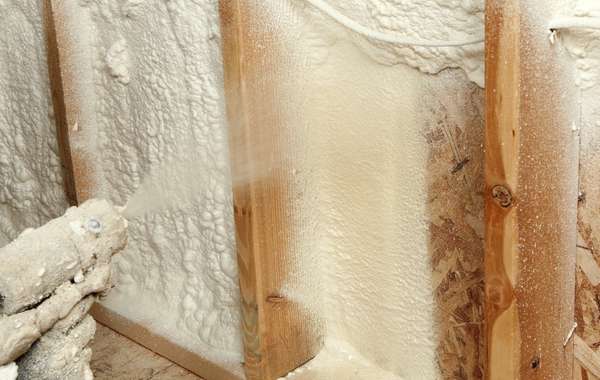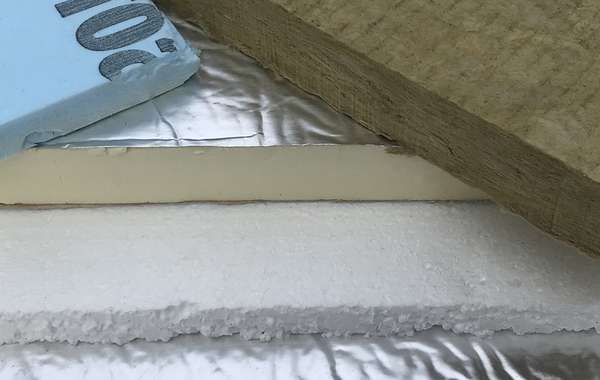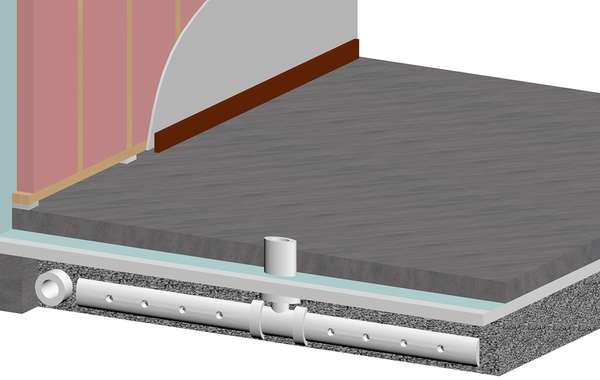New blowing agents for spray foam coming by the end of 2017
Foam insulation is a petroleum-based product and nothing will change that. But that was never the biggest problem the 'eco' building community had with foam insulation; the main issue was the inclusion of chemicals with a global warming potential (GWP) that was over a thousand times worse than carbon dioxide as a green house gas.
As a result of the 1990 Montreal Protocol to ban ozone-depleting gases - mainly chlorofluorocarbons (CFCs) - hydrofluorocarbons (HFCs) took their place as the blowing agents for foam insulation. That halted ozone depletion but handed the burden to the climate change file instead.
Blowing agents are the gasses that expand the foam to its rigid shape, and those tiny bubbles of gas act as insulators. They're found in XPS rigid panels and spray polyurethane foam (SPUF) as well.
What differentiates one blowing agent from another are the molecules. The class of hydrofluoroolefin (HFO) molecules contain at least one carbon-carbon double bond that makes them highly reactive in the atmosphere, giving them a very short life - which is why they have such a small impact as a greenhouse gas.
The GWP of HFC blowing agents was as high as 1,430, the GWP of the new HFO blowing agents is 1. You don't need to be a mathematician to know that's a pretty impressive improvement, and unlike its predecessors it doesn't solve one planetary emergency by exacerbating another.
Increased cost, but increased performance:
According to Honeywell's global sales manager for fluorinated products, Sanjeev Rastogi, the compound will increase the cost of an XPS panel by approximately 10 to 15%, but it also increases its energy performance from 10 to 15% at the same time.
At a thickness of two inches, the HFO-based spray foam has an R-value of 6.3 per inch; when used at an 8-inch thickness, the foam has an R-7.4 value per inch, which exceeds the performance of any foam insulation currently on the market.
The installation of spray foam requires the mixing of chemicals on site, and that reaction generates a lot of heat. So spray foam blown with HFCs could only be installed in layers of two inches to avoid a fire hazard; with the new HFO blowing agents it can be installed as thick as 6.5 inches in one pass. So not only will they be safer, it will be a quicker application.
Other reasons we are very happy about this:
- HFOs are non-toxic
- They do not degrade the ozone layer
- They are non-flammable
- They are not considered a volatile organic compound (VOC) by the Environmental Protection Agency (EPA)
There is no arguing that spray foam and rigid foam panels have certain applications where other insulation materials simply won't work. The excellent performance and sometimes ease of installation of foam products has always been tainted by the magnitude of damage they did to the planet.
While we have always recommended builders use alternatives to XPS and spray foam whenever possible, even considering the negative impacts there was often little choice but to recommend them as sometimes there were no suitable replacements. As dedicated green builders, it will be much easier to recommend foam in those situations now, knowing that the environmental impact has been so drastically reduced.
We currently don't know of any manufacturers of XPS rigid panels that have committed to transitioning to HFOs, but we will update this article as soon as we find one. Until HFOs make it in XPS panels, we'd still recommend avoiding them whenever possible.
Now you know more about the impact of climate change and whether rigid foam insulation panels may be eco-friendly. Find more pages about sustainable construction below and in the Ecohome Green Building Guide pages.
Find more about green home construction and reap the benefits of a free Ecohome Network Membership here. |



























BASF WALLTITE CM01 is available across Canada and has a GWP similar to rock wool batts and much less than semi rigid mineral fibres.
Hi Michael, thanks for letting us know about BASF Canada switching to the HFO blowing agents. It is great news to see this shift in the market happening. Please let us know if you have any information for our US readers as to when those products will be widely available in the States.
We have removed your promotional information as we don’t allow commercial advertising in our comments section, but we very much appreciate your input. I’ll be sending you an email shortly, and for anyone else reading this please contact us at info@ecohome.net for advertising opportunities within our site.
It is strange that the EPA wouldn't ban insulation that essentially causes more global warming than it reduces.
It would be awesome to get an updated article on the current state of the carbon footprint of different types of insulation. Where are we now? I suspect many homeowners would choose the insulation that is optimal for the environment, particularly on smaller projects like insulating a basement (yes, I' looking into insulating my basement). Your other article on comparing the different insulations seems to have been written before there was a change in propellents as well. I have looked for a good long time and haven't been able to find out what is currently. I ask here, simply because this is the best information that I have found so far.
Thanks for your work in helping us to understand these issues.
What would be a less toxic/more sustainable option than XPS rigid panels?
EPS rigid foam panels have much lower emissions during manufacturing. They aren't quite as high in R value per inch, but they are so much cheaper that you get more R value per dollar with EPS instead of XPS.
Will this FOAM seal my crawspace and help mitigate RADON levels ?